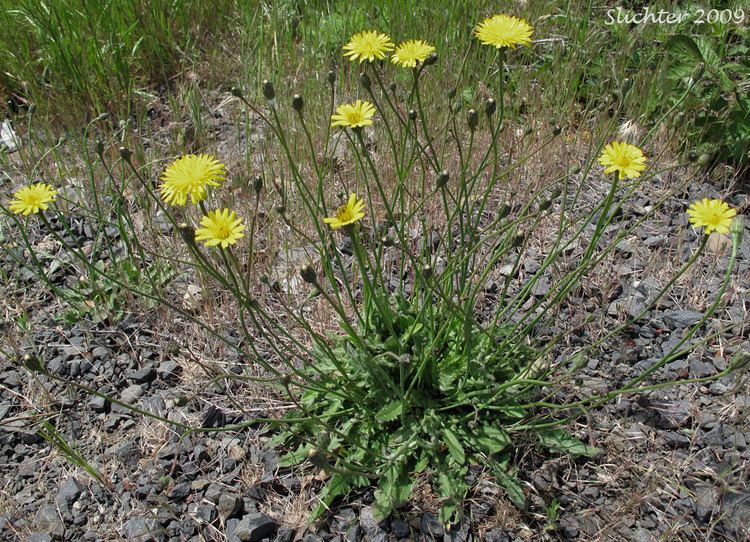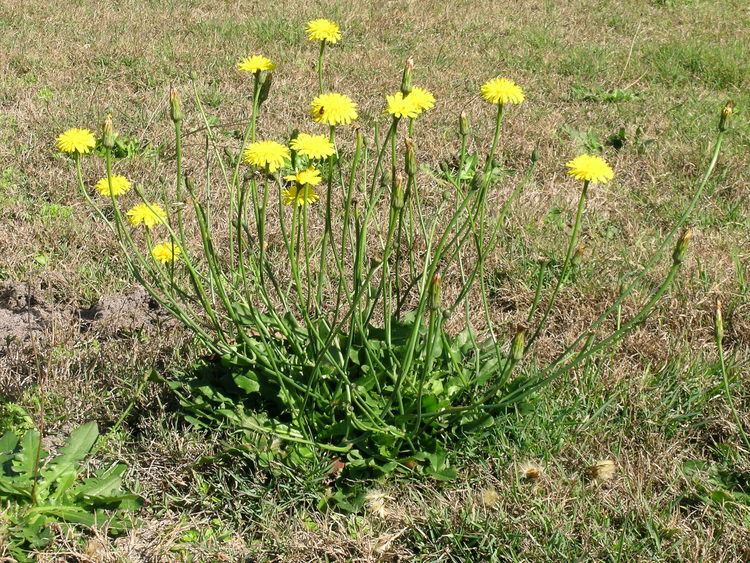Tribe Cichorieae Rank Species | Genus Hypochaeris | |
 | ||
Similar Cat's ear, Daisy family, Sonchus asper, Sonchus oleraceus, Spear Thistle | ||
Hypochaeris radicata (sometimes spelled Hypochoeris radicata), also known as catsear, flatweed, cat's-ear, hairy cat's ear or false dandelion, is a perennial, low-lying edible herb often found in lawns. The plant is native to Europe, but has also been introduced to the Americas, Japan, Australia and New Zealand where it can be an invasive weed. It is listed as a noxious weed in Washington State, in the northwestern United States.
Contents
- Cat s ear hypochaeris radicata
- Botany
- Etymology and differences from dandelions
- Culinary uses
- Toxicity
- References

Cat s ear hypochaeris radicata
Botany

The leaves, which may grow up to eight inches (20 cm) tall, are lobed and covered in fine hairs, forming a low-lying rosette around a central taproot. Forked stems carry bright yellow flower heads, and when mature these form seeds attached to windborne "parachutes". All parts of the plant exude a milky sap when cut.
Hypochaeris species are used as food plants by the larvae of some Lepidoptera species including The Shark.
Etymology and differences from dandelions
Catsear is derived from the words cat's ear, and refers to the shape and fine hair on the leaves resembling that of the ear of a cat.

The plant is also known as "false dandelion," as it is commonly mistaken for true dandelions. Both plants carry similar flowers which form windborne seeds. However, catsear flowering stems are forked and solid, whereas dandelions possess unforked stems that are hollow. Both plants have a rosette of leaves and a central taproot. The leaves of dandelions are jagged in appearance, whereas those of catsear are more lobe-shaped and hairy. Both plants have similar uses.
Culinary uses

All parts of the catsear plant are edible; however, the leaves and roots are those most often harvested. The leaves are bland in taste but can be eaten raw in salads, steamed, or used in stir-fries. Older leaves can become tough and fibrous, but younger leaves are suitable for consumption. In contrast to the edible leaves of dandelion, catsear leaves only rarely have some bitterness. In Crete, Greece, the leaves of a variety called παχιές (pachiés) or αγριοράδικα (agriorádika) are eaten boiled or steamed by the locals.
The root can be roasted and ground to form a coffee substitute.
Toxicity
This species is suspected of causing stringhalt in horses if consumed in excess.
